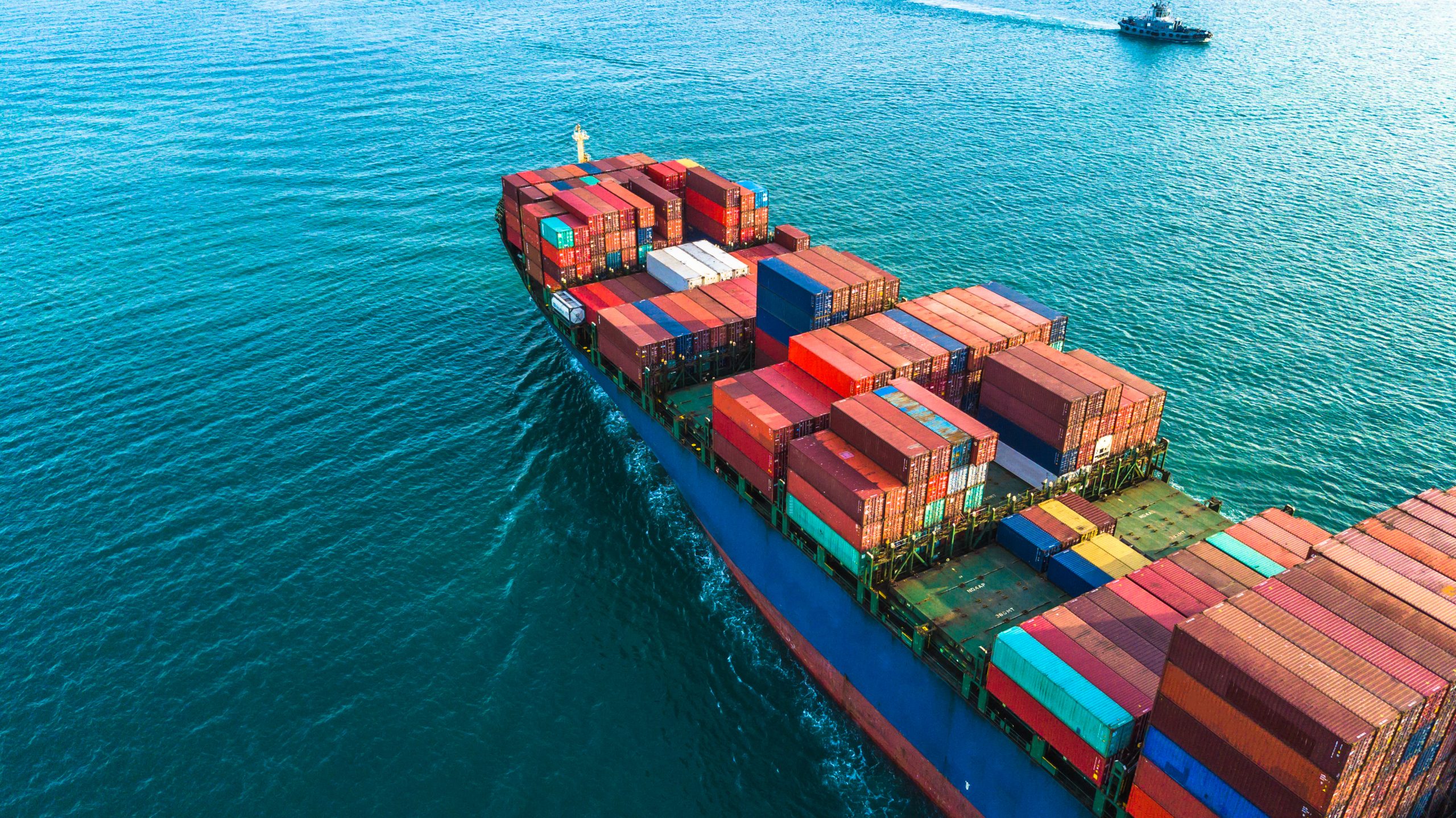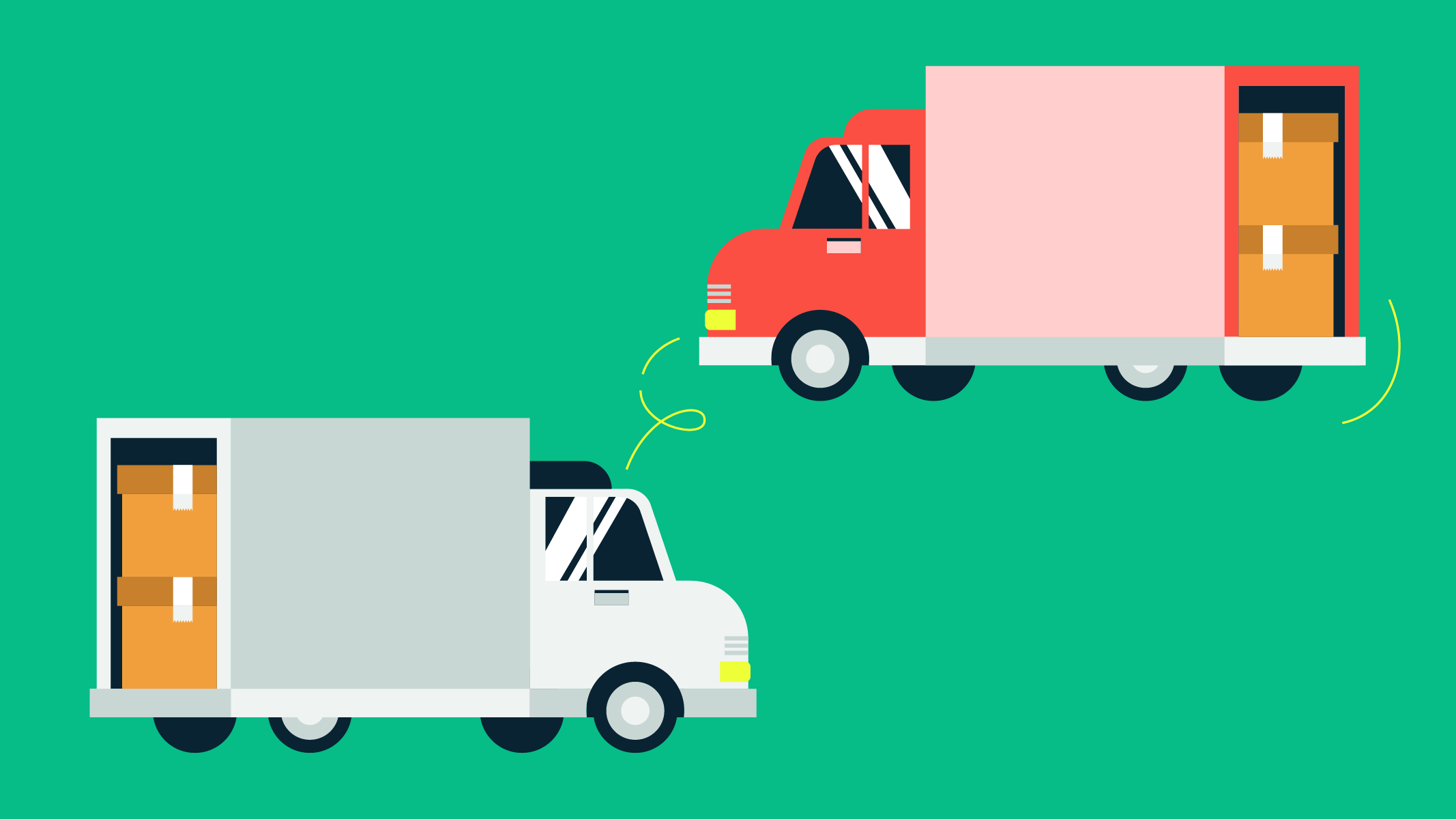A guide to bulk shipping’s role in inventory management
Bulk shipping is a very efficient inventory management strategy with proper planning and tracking.
It is essentially the delivery of bulk shipments using large vessels to deliver huge quantities of goods and is intended to save your business time and money. In this guide, you’ll learn more about the basics of bulk shipping, its benefits, and some of the disadvantages so you can mitigate the risks involved.
What is bulk shipping?

Bulk shipping is transporting goods and products in large quantities, which are usually unpackaged.
The vessel acts as the container, and the type of goods carried may vary. Goods and products that qualify can be liquid or non-liquid, in the case of items such as grains, coal, iron, or liquid, such as petroleum, gasoline, or milk.
How does bulk shipping work?
Bulk shipping is usually handled by an external company that owns the ships and handles the bulk goods’ loading, transportation, and storage.
The cargo can then be docked at the destination port or moved to a warehouse, depending on your own manufacturing processes and the nature of the goods and products.
Generally, the process of bulk shipping involves three major steps:
- Loading
- Unloading
- Storage
Though it can be a very complex process, mass shipping can help you save money and ensure you have the inventory you need readily available when you need it. There are many moving parts to keep track of, but the returns can be worth the planning ahead required when using this inventory management technique.
What kind of goods can be bulk shipped?

Different goods and products can be bulk shipped, generally referred to as bulk cargo. This type of cargo is defined as cargo that is shipped unpackaged and in large quantities, usually loaded directly onto a vessel or container. It is non-fragile and has a longer shelf life, thus lending itself to being loaded, unloaded, and stored for longer periods.
Many goods can be transported as bulk shipments, but they fall under two main categories, which dictate how they are handled and stored and what types of vessels are needed to transport them.
1. Dry bulk
This category includes:
- Grain
- Certain food products
- Coffee
- Salt
- Coal
- Plastics
- Minerals
- Wood items
Dry bulk is transported on large vessels carrying bulk products and is handled using equipment such as conveyor belts, cranes, or silos. The bulk carriers have a single-running deck with many hatchways. This type of bulk needs to be kept dry throughout the entire process, and special attention needs to be given to loading it evenly on the vessel so it doesn’t cause any instability.
2. Liquid bulk
Including goods such as:
- Matural gas
- Petroleum
- Cooking oil
Liquid bulk is shipped using specialized tankers that can hold liquid and be handled with the help of pumping stations and pipelines. Liquid bulk can be categorized as hazardous or non-hazardous, with the former needing special attention and conditions when being shipped.
What types of ships are used for bulk shipping?
Bulk carriers are used to carry raw materials, whether dry or wet.
There are a few main types of bulk carriers, categorized based on the type of cargo they transport and the channels they can pass through. Although we outline the main types of vessels below, there is some variance and evolution within them. With lock limits in the Panama and Suez canal having changed before and supply chain disruption over the past few years, these parameters will likely continue to change.
The top countries that own bulk carriers are Greece, Japan, and China. The main categories of vessels used for bulk shipments are as follows.
Handysize
The most widely available size of the ship for regional cargo freighting — the handysize class generally includes vessels that can carry up to 50,000 DWT.
In comparison, some also include Supramax and Handymax vessels (which carry up to 60,000 DWT) in the larger Handysize category. Though the smaller widely available category of vessel, Handysize ships are the more versatile option, being able to carry a wide variety of cargo, and are suitable for breakbulk, dry, and wet bulk shipments.
What does DWT mean?
DWT, or Deadweight ton, is the measurement of the weight of everything that the ship is carrying, including:
- Fuel
- Supplies
- People
- Ballast
Panamax and New Panamax
Defined using the maximum allowable width and length of the Panama Canal’s locks, vessels in the Panamax and New Panamax class can carry up to 120,000 DWT.
This class of ship is regulated by the canal’s maximum depth and height of the Bridge of the Americas (with a 201-foot clearance). These vessels have a capacity of up to 13,000 containers or TEUs. With an estimated 96 percent of ships now able to pass through the Panama canal’s locks, these vessels are suited for bulk shipment in large quantities on various routes, with the main condition reaching an aptly sized port.
Capesize
This category of vessel cannot clear the restrictions imposed by the dimensions of the Panama or Suez canals, thereby requiring navigation between oceans by passing Cape Horn or Cape Agulhas.
The largest available dry bulk vessels in the Capesize class have a maximum capacity of 170,000 DWT. The category is most often used for bulk shipments of ore, raw materials, and coal, with its size restricting docking options to the largest terminals in the world.
Oil tanker
The largest category of vessel that qualifies for handling bulk shipments, these ships are destined exclusively for transporting crude oil to and from only the largest ports in the world. With up to 550,000 DWT at its highest end, the category features several subtypes of vessels, including:
- Very large crude carriers (VLCC)
- Ultra-large crude carriers (ULCC)
What are the costs of using bulk shipping?

Different costs are included, starting with the cost of the goods you purchase and what you need to pay to the bulk shipping company you work with. These costs depend greatly on the type of business you run, the quantities you need, and your location.
Generally, the driving factors in establishing cost are the weight of the bulk cargo and size, the distance it needs to travel and where, and other particularities depending on the type of goods you want to ship in bulk.
Freight charges start at $18,000 per day for a Handymax ship and can get to $70,000 per day for a Capsize. The market can fluctuate a lot, and many factors are considered when pricing is calculated.
Benefits of bulk shipping
Many industries can benefit from bulk shipping if it is well-managed and optimized, and these are just some of the benefits of shipping in bulk:
- You have many goods handy when needed, so you can speed up your processes and avoid any downtime. Especially as we witnessed recent supply shortages, it became clear how getting more products delivered in bulk can be beneficial for your business
- It is often cheaper to get products in bulk as you can enjoy discounts and save on packaging. And when prices for a certain product quickly go up, you will be less exposed to shifts in the markets
- Bulk shipping is an inventory management technique that can maximize profits if done right. You can be more competitive by cutting costs and ensuring your production always has the goods it needs to keep running
- It will lower your shipping costs as you won’t need shipments arranged as often. You can get more products delivered at once and reduce spending on taxes and other resources needed for each individual shipping
Risks carried by bulk shipping
Bulk shipments can present some challenges due to their packaging, as perishability and inventory estimates can become significant risk factors in the process:
- On the other side of the coin, you can end up having too many products for your production capabilities. It can be easy to overdo bulk shipping and rush into buying too much of a product that can end up no longer of interest, but if you are on top of your real-time inventory needs, then you don’t need to worry
- Bulk shipping is suitable mostly for non-perishable goods as the rest don’t have a long enough shelf life to make it worth it. And if you end up buying bulk products that you don’t get to use in time, then you end up wasting money. In these cases, end-to-end traceability software can help you out
- It can increase your initial costs as you need to have the money to buy more products than you need at the time. So you will lock in a certain amount of money, and this might become an issue if things don’t turn out as planned. Of course, this can also be mitigated with real-time master planning and good visibility
- The goods you get shipped in bulk need to be stored and managed, which will require resources and generate costs for your business, but you can ensure these costs are accurately accounted for with costing features built for precision
So if you want to maximize the benefits while keeping the risks in check, go ahead and find out more about inventory management techniques and advanced manufacturing ERP software. By outlining the risks, we wanted to make sure that you are aware of all these scenarios and adopt the right tools for managing your bulk shipping. Katana ERP has solutions for all your inventory management needs.
Katana Cloud Inventory
Book a demo to get all your questions answered regarding Katana’s features, integrations, pricing, and more.
Using ERP to optimize bulk shipments as an inventory management technique

Similar to ABC inventory management, consignment, or drop-shipping, bulk shipping is an inventory management technique.
If done right using leading manufacturing ERP software, it can be extremely beneficial to your business. Katana ERP mitigates many of the risks involved in bulk shipping through its cloud-based software, ensuring you get real-time data inventory data across multiple locations, making tracking and decision-making so much easier for you.
When handling all the moving parts of your business, you also want to make sure that you have all the data and tools you need in one place, even if you are using multiple products. Katana ERP integrates with top shipping providers so you can save even more time. For example, you can connect your Katana account to ShippyPro, 2Ship, Outvio or Shiptheory. And we make sure that we harmoniously tie together seamless implementation with numerous integrations.
Table of contents
Inventory management guide
Get visibility over your sales and stock
Wave goodbye to uncertainty by using Katana Cloud Inventory for total inventory control






